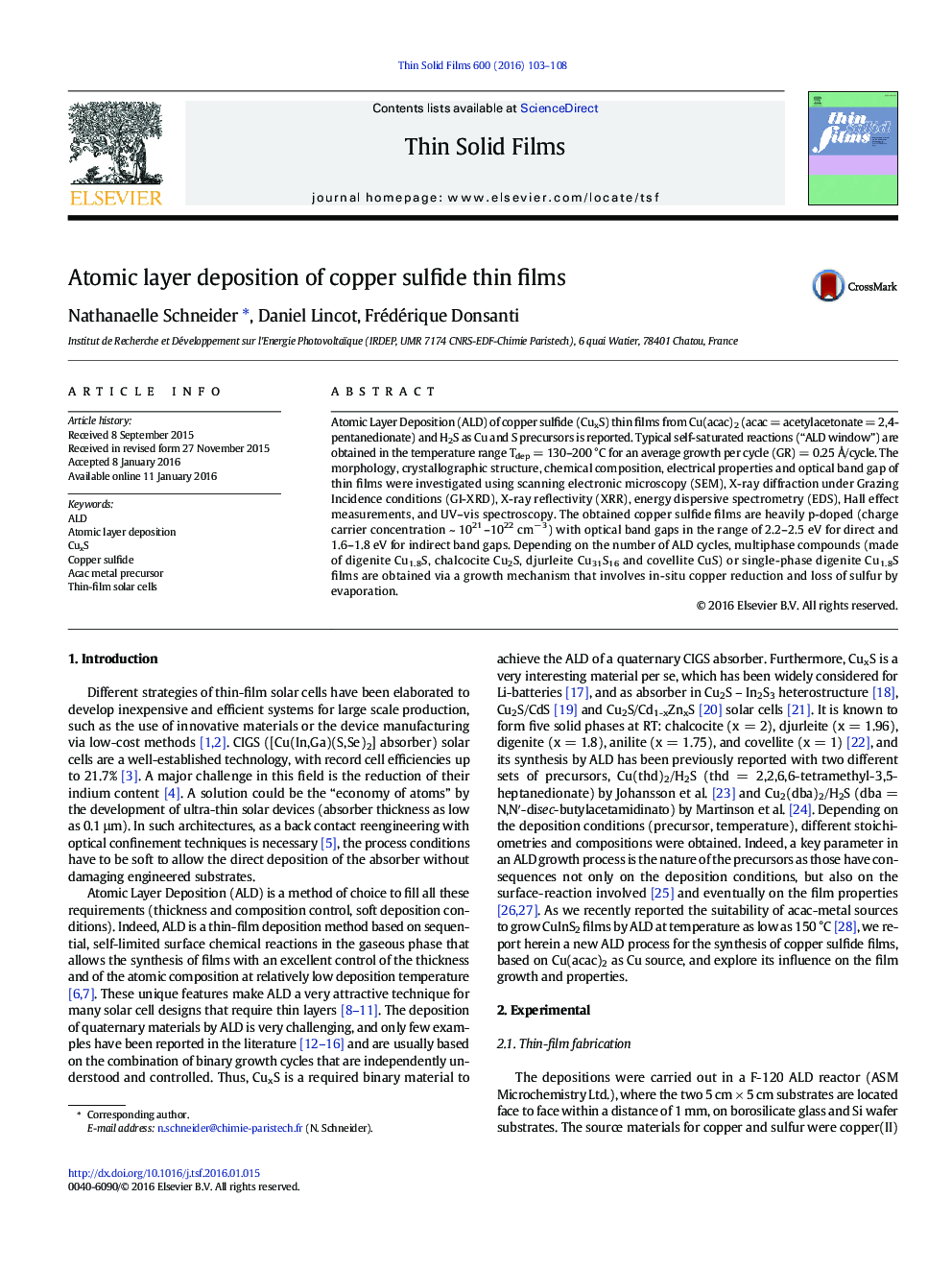| Article ID | Journal | Published Year | Pages | File Type |
|---|---|---|---|---|
| 1664165 | Thin Solid Films | 2016 | 6 Pages |
•CuxS films were synthesized by atomic layer deposition from Cu(acac)2 and H2S.•Self-saturated reactions at Tdep = 130–200 °C for growth = 0.25 Å/cycle•Multi- or single- phase films are obtained depending on the number of cycles.•Growth mechanism involves copper reduction and loss of sulfur by evaporation.
Atomic Layer Deposition (ALD) of copper sulfide (CuxS) thin films from Cu(acac)2 (acac = acetylacetonate = 2,4-pentanedionate) and H2S as Cu and S precursors is reported. Typical self-saturated reactions (“ALD window”) are obtained in the temperature range Tdep = 130–200 °C for an average growth per cycle (GR) = 0.25 Å/cycle. The morphology, crystallographic structure, chemical composition, electrical properties and optical band gap of thin films were investigated using scanning electronic microscopy (SEM), X-ray diffraction under Grazing Incidence conditions (GI-XRD), X-ray reflectivity (XRR), energy dispersive spectrometry (EDS), Hall effect measurements, and UV–vis spectroscopy. The obtained copper sulfide films are heavily p-doped (charge carrier concentration ~ 1021 –1022 cm− 3) with optical band gaps in the range of 2.2–2.5 eV for direct and 1.6–1.8 eV for indirect band gaps. Depending on the number of ALD cycles, multiphase compounds (made of digenite Cu1.8S, chalcocite Cu2S, djurleite Cu31S16 and covellite CuS) or single-phase digenite Cu1.8S films are obtained via a growth mechanism that involves in-situ copper reduction and loss of sulfur by evaporation.
